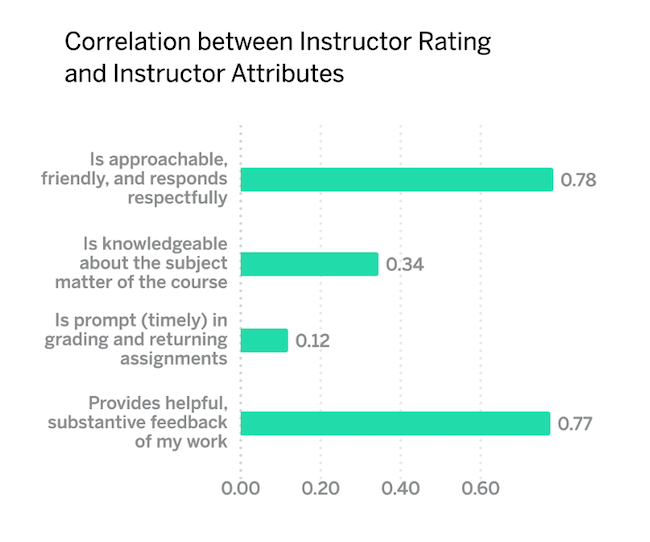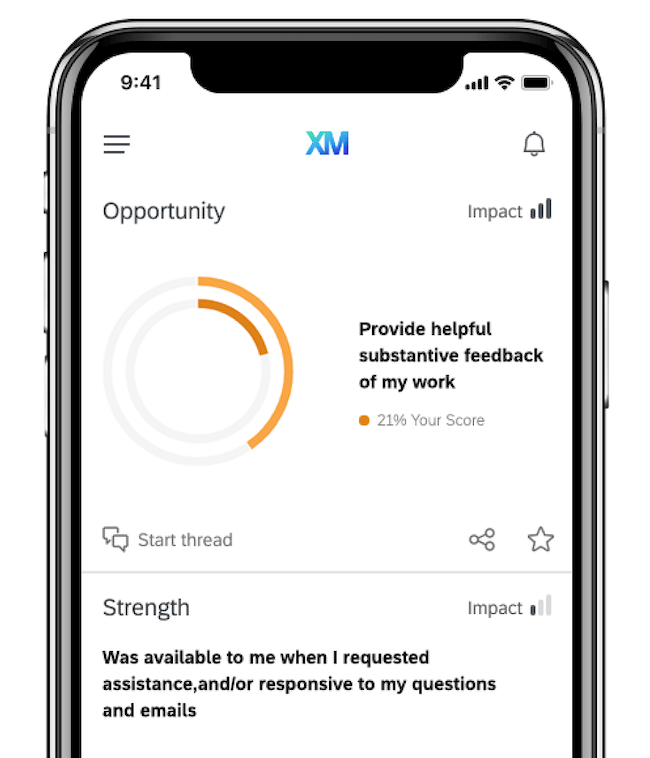What are course evaluations?
A course evaluation is the final survey a faculty member sends to course members to evaluate the student learning experience.
The evaluation form helps instructors to improve their teaching practices by giving them a deeper understanding of the students’ experience. Were their teaching methods effective? Did the learning environment adequately facilitate their studies? Was more technical support required?
The format of these class evaluations might change and the evaluation purpose might be different, but ideally, all evaluations need to assist in course improvement for the benefit of future students.
Use our free student satisfaction survey template
What might you measure with course evaluation?
Your class evaluation might measure:
- The communication skills of the university, its departments, or its instructors
- The organisation of the course or the institute
- The flexibility provided to students
- The assessment setup and its fairness
- The experience in the classroom
- The attitude of the teacher and the tone of teacher-student interactions
- How encouraged students felt during the course
- How in-depth the course covered the topic at hand
- How clear the teaching was for students
- How difficult the course was
- Whether students felt the course was priced fairly
Collect student feedback and set up your course evaluations today
The importance of student feedback
Student feedback can help you to shape not only the learning outcomes students will gain from your classes, but potentially improve their course results. It can also help you to determine which instructors and teaching methods provide the best experiences for the students that take your courses.

Your students’ perception of the learning they receive is important because it can greatly affect the view of your institution as a whole. Students are paying for their education, and as consumers, they look to other consumers for guidance on the reliability and worthiness of the instruction you provide.
League boards and academic results play a part in judging a university or other academic institution, but so does the view of your instructors and courses by the students themselves. Being able to get feedback about what’s working and what isn’t from current students means you can improve your service and hopefully guide student opinion for future learners.
How to conduct a course evaluation
1. Establish the purpose of your course evaluation
The goal for your class evaluation will guide what information you should aim to gather. Are you seeking to improve on your course structure? Are you evaluating particular instructors? Decide on what data you’d like to collect and why before beginning the evaluation process.
Related article: 10 tips for building effective surveys
2. Outline the audience for your course evaluation
Your audience for each course evaluation can include multiple inputs from students and faculty. Your selected recipients should find it easy to access and go through your evaluation process. Given that typically, surveys only generate a response rate between 20% and 30%, any obstacles to filling in your evaluation are likely to decrease your audience pool even further.
3. Draft the questions for your course evaluation
You’ll need to draft survey questions that will elicit the answers you need from your audience. There are a few types of questions and formats you can use to collect data, but to avoid bias, all of them should avoid leading statements or mutually exclusive choices which can cause confusion.
Course evaluation question types
You can:
- Offer a multiple choice question: What was your preferred method of communication? Email / Telephone / SMS
- Use a rank order: Rank these modules in order of your preference: General History / Ancient Civilisations / WWII
- Use a slider question: Move the slider below to indicate the rating of your course out of 10.
- Provide a text entry box: What suggestions would you give for improving this course? Write them below.
- Give a Likert scale option: How satisfied were you with this course? Very satisfied / satisfied / neither satisfied nor dissatisfied / dissatisfied / very dissatisfied.
Course evaluation examples questions
Ideally, you’ll ask a range of questions that cover:
- The instructor of the course
- The course material
- The course structure and delivery
- General or the overall course opinion
Questions could include:
- Was the instructor well prepared to give the course?
- Did the course structure help you to understand key concepts?
- Do you now feel confident in completing post-foundation courses in this subject?
- Did the examinations fairly assess your knowledge of the material?
Course evaluation scale
You’ll also need a scale for your class evaluation to allow you to create benchmarks. With metrics specific to your course or your institution created with a standardised course evaluation list of questions, you’ll be able to check your progress over time.
4. Decide how to send out your evaluation survey
Your survey will need to be delivered in a way that recipients will prefer. If the course is largely delivered with email communication, for example, offering the class evaluation survey through an email link is advisable.
5. Send out your course evaluation
Your course evaluations should take place at times to suit your students and schedule, rather than being sent out at fixed points in the year.
For example, sending out a survey only once the course has been completed means that you lose out on valuable feedback as the course progresses – and the opportunity to resolve issues.
You can design several surveys to be sent at appropriate times during the course’s run, with a variety of questions designed to take the pulse of participants’ opinions.
6. Take action on your course evaluation data

The most important part of completing a class evaluation is to analyse the data, create useful insights and take action. Without a comprehensive review of your evaluation reports and steps being taken, students will likely lose interest in providing feedback and issues will go unresolved. Even if you reward your students for offering feedback, ignoring your evaluation results will cause problems to continue and teaching practices to suffer.
Related article: Best practice for survey data analysis
Course evaluation best practices
Go digital
Online course evaluations are likely the easiest way to encourage students’ feedback. By making the evaluation process easy, respondents are more likely to provide you with much-needed feedback.
Set reminders
Course attendants might have more on their mind than providing you with evaluation responses, but it’s in your best interest and future students’ best interest to get answers. Setting reminders for students can help them to fill out their course evaluation survey in a timely manner.
Integrate your course evaluation surveys
Your organisation or learning institution likely has internal systems that both faculty and students use. Rather than using a system that exists outside of these systems, use online course evaluations that can be integrated with you and your students’ systems to encourage all parties to provide useful feedback. This will help to increase response rates.
Use real-time feedback to pinpoint issues as they happen
Your student learning experience can always be improved. Rather than having a set evaluation period, make your course evaluation a constantly-monitored factor in how you develop your course content and its delivery. Evaluating courses with this more pulse-based approach allows you to adapt quickly to student needs, providing your learners with what they need, when they need it.
Evaluate on a granular level
Your class evaluation shouldn’t just focus on the course as a whole – you should be able to break down feedback by class, department, instructor, and course level. This helps you to pinpoint issues and enable better teaching.
7 ways to make your course evaluations more effective
Creating a course evaluation system
Your course evaluations are an invaluable tool for gauging student engagement, tutor efficacy, and your organisation’s ability to provide excellent education. You need to choose a course evaluation system that can not only provide you with the means to evaluate your courses but allow you to improve them with detailed insights and suggested action.
Course evaluations are the key method of measurement for the ROI of your courses. Both your students and your organisation invest in the courses you provide. Without an evaluation of the learning environment, the courses, the instructors, and the facilities as a whole, the benefit of your investments becomes difficult to pinpoint.
Qualtrics’ course evaluation software is a sophisticated tool for getting to the fine detail of your student sentiment and the value of the learning you provide. With real-time analysis and suggestions for opportunities to improve, this refined course evaluation system provides you with unrivalled insights into the student body and the potential for improvement.
Create a better student experience with Qualtrics course evaluations